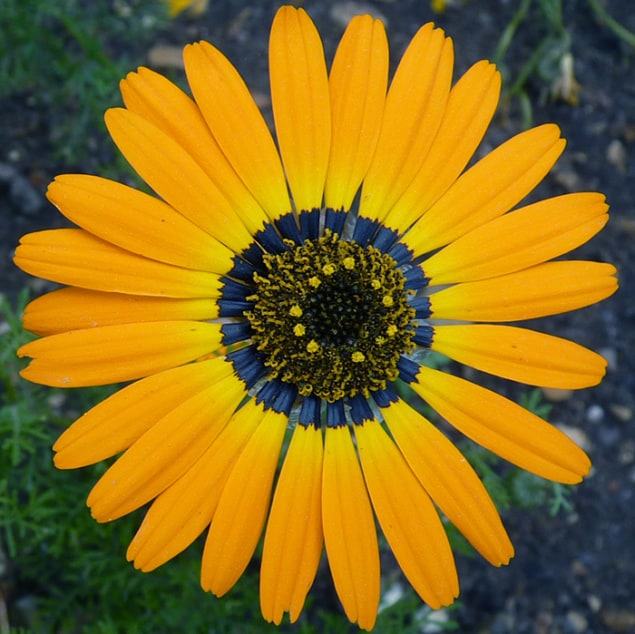
Repeating nanostructures on the petals of certain flowers help to attract bees, scientists have shown. Parallel folds in each epidermal-cell’s cuticle – the protective coating on the petal surface – approximate diffraction gratings but with a degree of disorder that preferentially scatters blue–ultraviolet (UV) light.
Many bee species are particularly sensitive to light in the blue–UV range, since correspondingly coloured flowers often make especially rewarding foraging targets. Pigments responsible for this colouration are difficult to produce, however, and most flowering plants lack the necessary genetic and biochemical machinery. Now, though, researchers at the University of Cambridge, UK, led by Edwige Moyroud, along with collaborators at the Royal Botanic Gardens, propose that the evolution of a few diverse species of flowering plants has converged on photonic nanostructures as a solution.
Deliberate disorder
Some level of irregularity is to be expected in natural structures, but it was not known if this is a necessary feature or merely a side effect of biological development. To test the importance of pattern disruption, the researchers used finite-difference time-domain (FDTD) calculations to model the effect of different degrees of disorder on the optical response.
Perfectly periodic gratings produced an iridescent effect with diffraction peaks determined by the wavelength. When the pattern was disrupted to an extent similar to that seen in the natural nanostructures, however, diffraction-induced iridescence disappeared, leaving a response dominated by scattered blue–UV light. The effect was consistent over a wide range of grating parameters, meaning all the flowers studied showed a similar “blue halo”, despite significant differences in structure at the nanoscale.
Artificial flowers
To investigate if the effect is meaningful in the real world, the researchers made artificial flowers with a range of background pigments and nanostructures, including perfectly periodic gratings and flower-like disordered gratings. Bumblebees trained to seek a sucrose solution as a reward (in preference to an undesirable punishment solution) learned to discriminate between smooth and nanostructured surfaces, but were quicker to respond to the disordered blue-halo pattern. The bumblebees seemed able to spot a blue halo against any background colour, with yellow and black flowers discovered as efficiently as all-blue flowers. Blue haloes on already blue flowers had little effect on behaviour.
It is not known if natural photonic structures can attract other insect pollinators, or whether other plants use the effect for different purposes.
Full details of the research are published in Nature.



